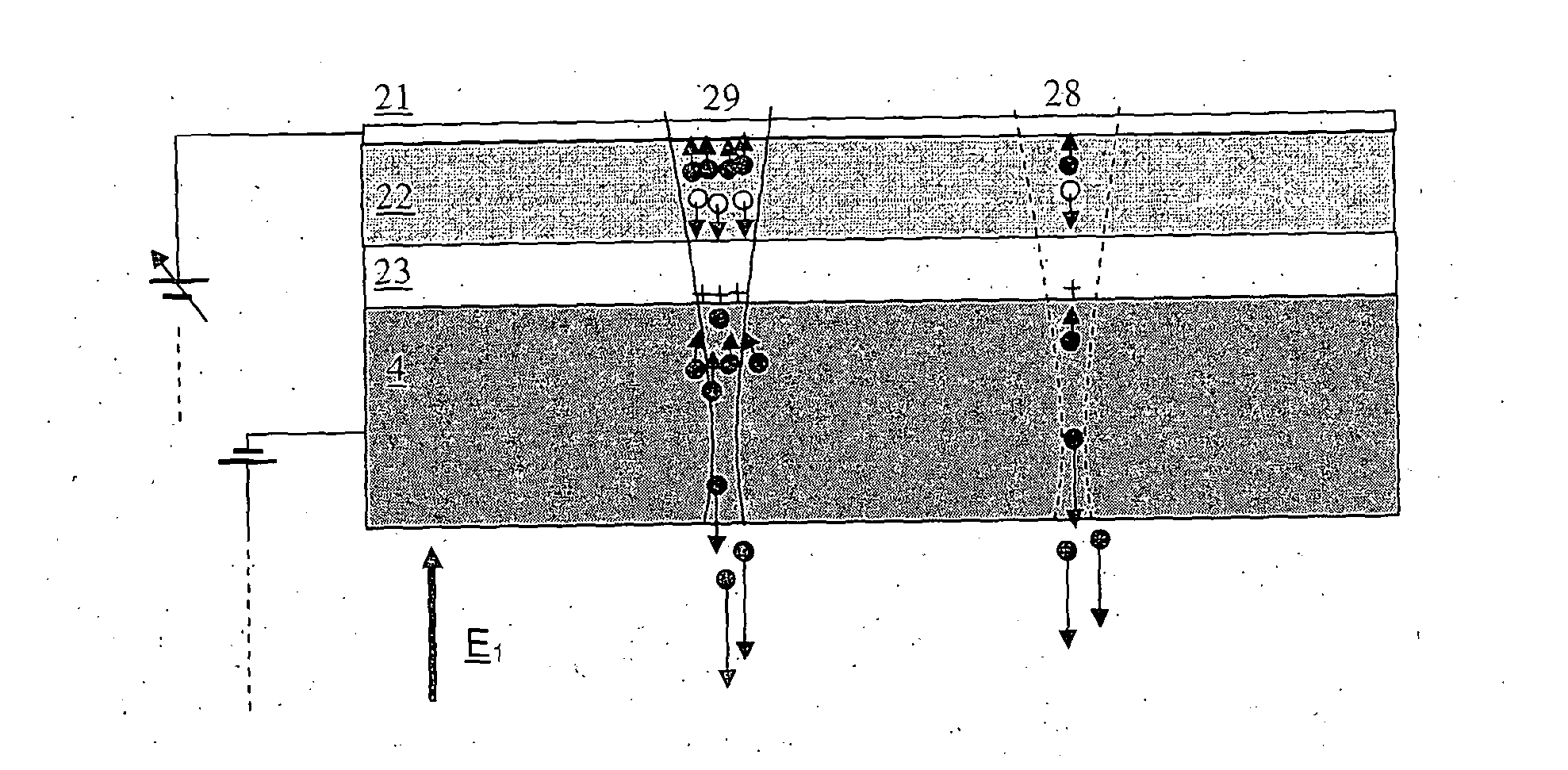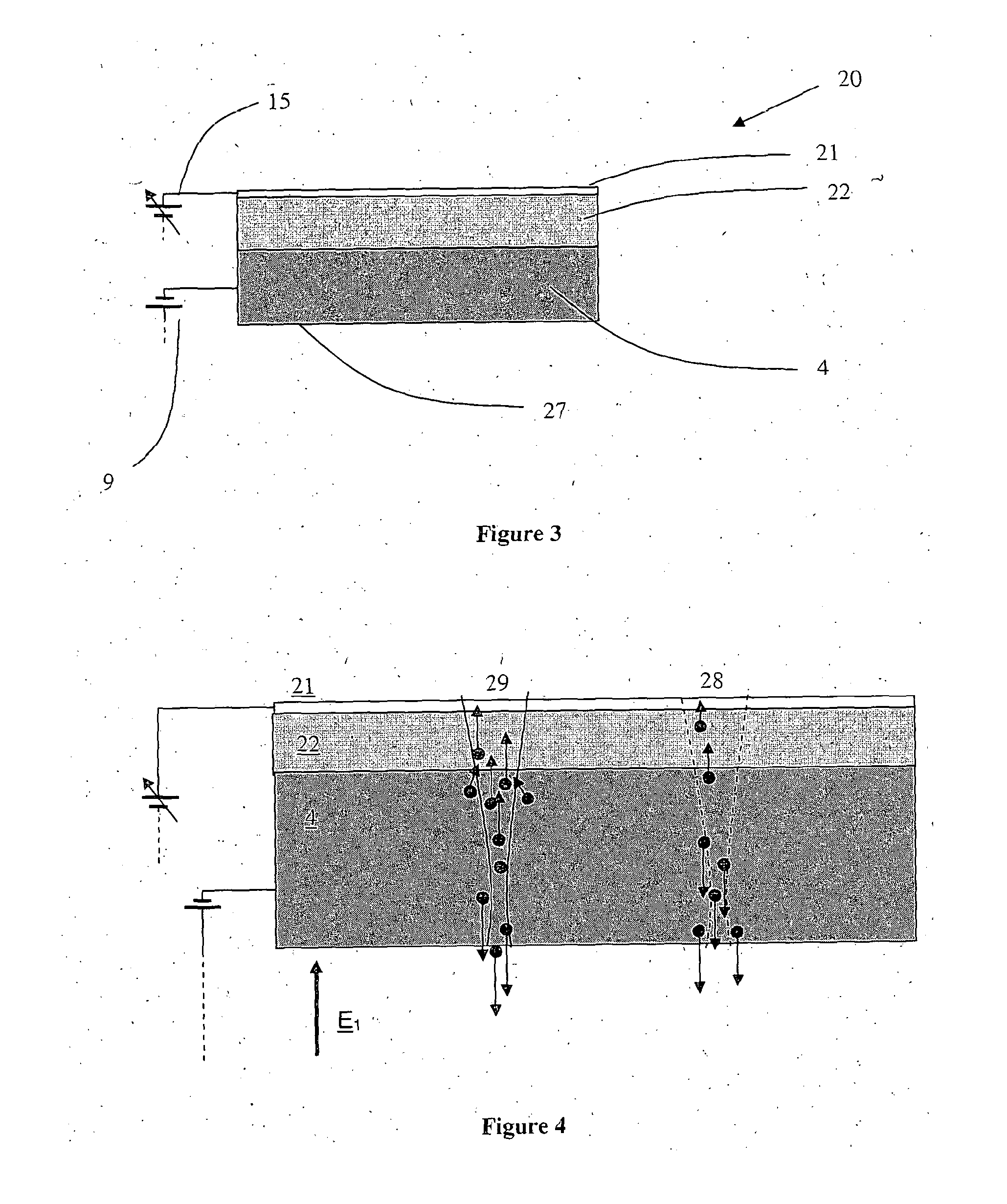Bright source protection for low light imaging sensors
a low-light imaging and bright source protection technology, applied in the field of low-light imaging sensors, can solve the problems of permanent damage marks on the detector material of the sensor, complete loss of contrast, and degradation of performance, and achieve the effect of reducing ion damage to the photo-cathode, increasing the sensitivity of the i2 tube, and not needing to reduce the voltage across the mcp
- Summary
- Abstract
- Description
- Claims
- Application Information
AI Technical Summary
Benefits of technology
Problems solved by technology
Method used
Image
Examples
first embodiment
[0019]FIG. 2 is an example layout of an intensification tube according to the present invention;
[0020]FIG. 3 illustrates part of the first embodiment of the invention;
[0021]FIG. 4 is a sketch showing the action of the photo-generated electrons in the photo-cathode and photo-sensitive layer under the applied fields in low and high intensity illumination cases for the first embodiment of the present invention;
second embodiment
[0022]FIG. 5 is an example layout of an intensification tube according to the present invention;
[0023]FIG. 6 illustrates part of the second embodiment of the present invention;
[0024]FIG. 7 is a sketch showing the action of the photo-generated electrons in the photo-cathode, photo-sensitive layer and dielectric materials under the applied fields in low and high intensity illumination cases for the second embodiment of the present invention.
third embodiment
[0025]FIG. 8 is an example layout of an electron receiving silicon image chip according to the present invention;
[0026]FIG. 9 is an example layout of an electron receiving silicon image chip with an additional insulating layer according to a forth embodiment of the present invention;
PUM
 Login to View More
Login to View More Abstract
Description
Claims
Application Information
 Login to View More
Login to View More - R&D
- Intellectual Property
- Life Sciences
- Materials
- Tech Scout
- Unparalleled Data Quality
- Higher Quality Content
- 60% Fewer Hallucinations
Browse by: Latest US Patents, China's latest patents, Technical Efficacy Thesaurus, Application Domain, Technology Topic, Popular Technical Reports.
© 2025 PatSnap. All rights reserved.Legal|Privacy policy|Modern Slavery Act Transparency Statement|Sitemap|About US| Contact US: help@patsnap.com



